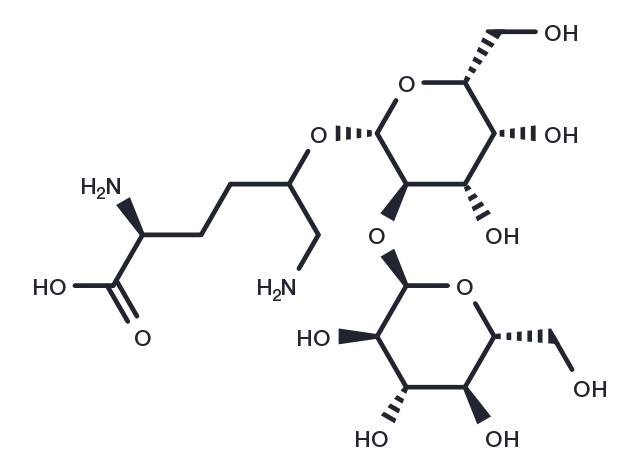Powder: -20°C for 3 years | In solvent: -80°C for 1 year


Glucosylgalactosylhydroxylysine is a bone formation and bone resorption marker that is related to bone turnover processes during growth and development as well as metabolic bone diseases.

| Pack Size | Availability | Price/USD | Quantity |
|---|---|---|---|
| 5 mg | Inquiry | Inquiry | |
| 50 mg | Inquiry | Inquiry | |
| 100 mg | Inquiry | Inquiry |
| Description | Glucosylgalactosylhydroxylysine is a bone formation and bone resorption marker that is related to bone turnover processes during growth and development as well as metabolic bone diseases. |
| Synonyms | Hydroxylysine-glucose-galactose |
| Molecular Weight | 486.47 |
| Formula | C18H34N2O13 |
| CAS No. | 32448-35-4 |
Powder: -20°C for 3 years | In solvent: -80°C for 1 year
You can also refer to dose conversion for different animals. More
bottom
Please see Inhibitor Handling Instructions for more frequently ask questions. Topics include: how to prepare stock solutions, how to store products, and cautions on cell-based assays & animal experiments, etc.
Glucosylgalactosylhydroxylysine 32448-35-4 Hydroxylysine-glucose-galactose inhibitor inhibit
